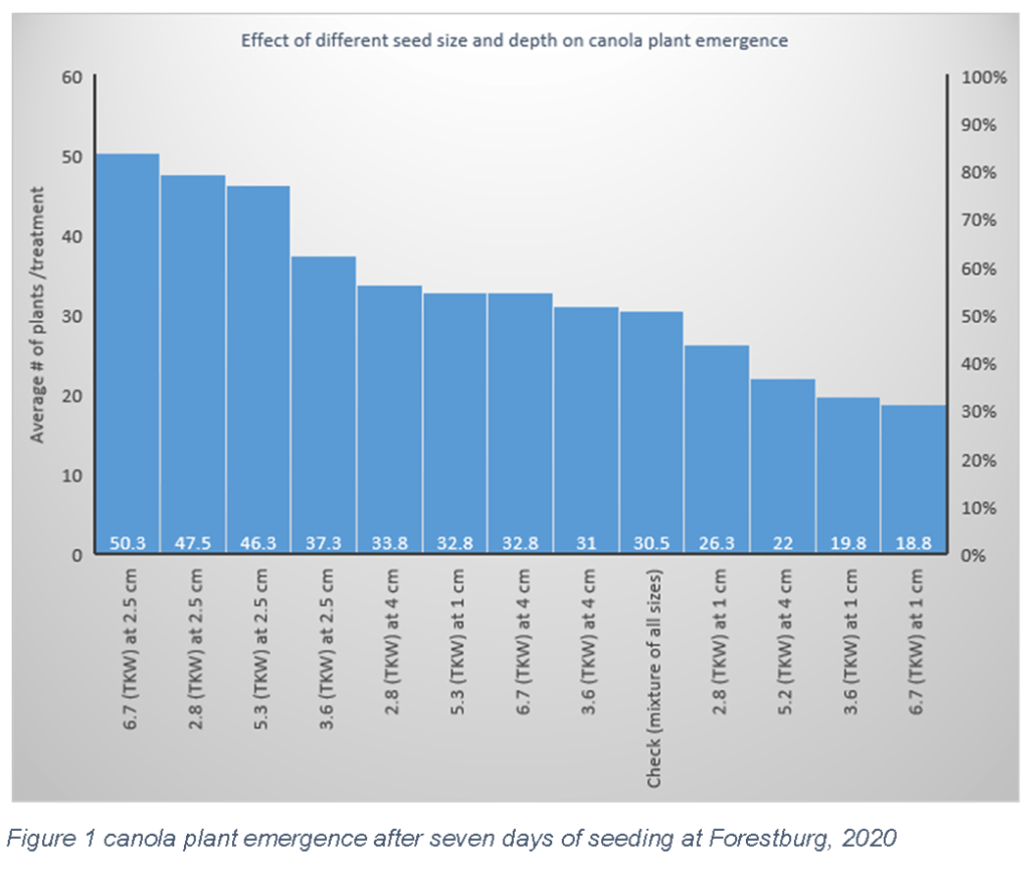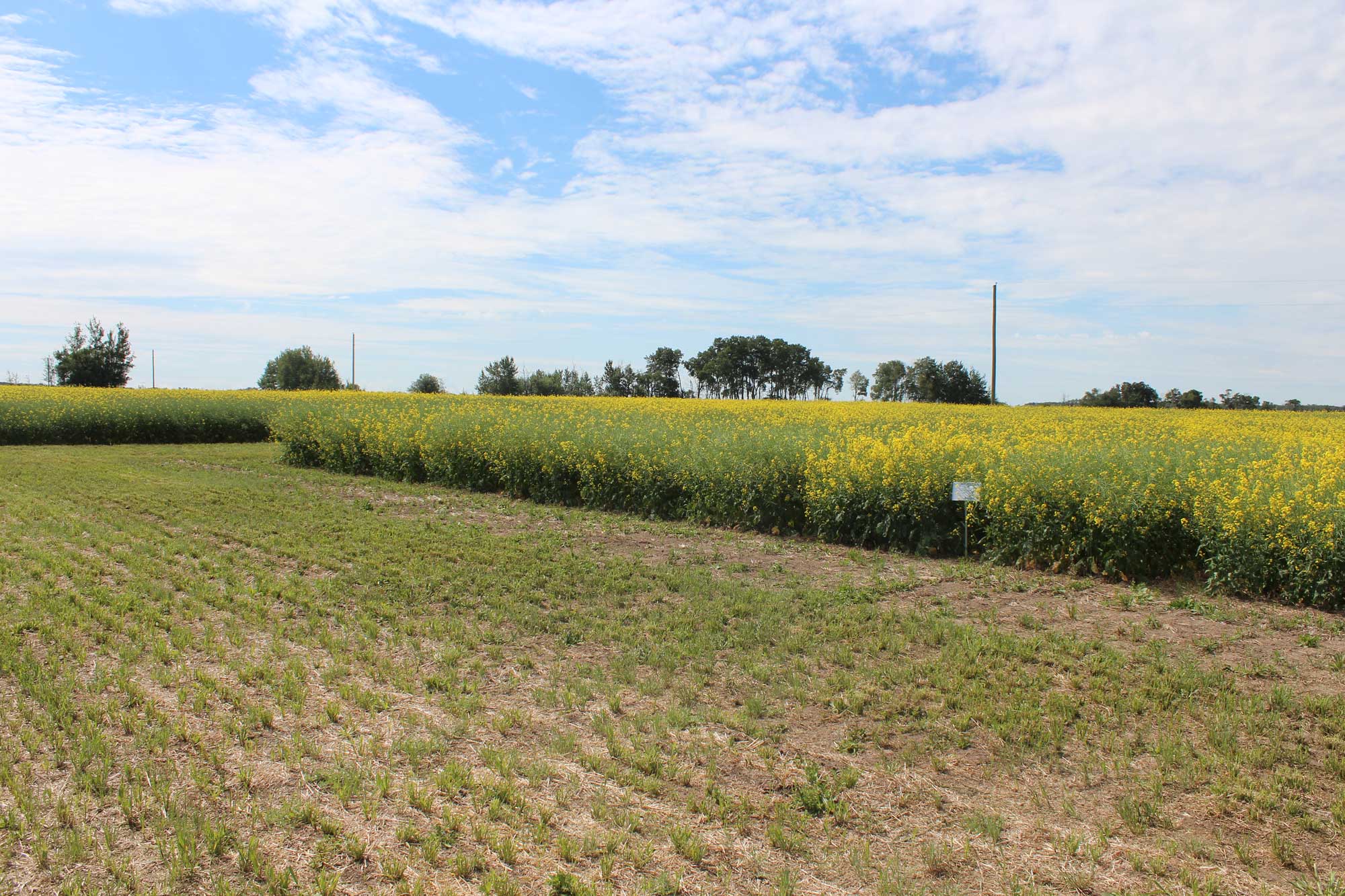Few would argue that canola is the cash crop of the Prairies. With the development of many new varieties and genetics, seeds vary in size. Regardless of the variables, growing canola comes with a significant expense. Along with the purchase of the seed and the cost of seeding, many of the seeds do not grow for various reasons. As a producer, if you are achieving 70% establishment, you are doing exceptionally well. Producers want to ensure they are getting the most value for their money and want to know optimum seeding depth based on seed size.
Seeding depth is one of the easiest objects to change during the spring and although, most research shows that canola does better if seeded shallow, it is easy to set the seed drill to follow the soil moisture level. So, how deep is too deep, and does the size of the seed affect how deep you can seed without jeopardizing the establishment of the crop?
To answer these questions, SARDA Ag Research, the Battle River Research Group (BRRG), and the Lakeland Agricultural Research Association (LARA) have put together a trial to explore seeding depth and seed size over three years in three locations. By running the trials over three years and in three locations in the province, we hope to see a variety of climatic conditions and be able to establish some guidelines for seeding canola with regards to the interaction between seed size and seeding depth. All treatments at all locations will be grown following optimum agronomic practices. The questions to be answered are:
- Does the seed size affect the establishment and maturity level of the crop and ultimately yield and quality?
- Does the seeding depth affect the establishment and maturity level of the crop and ultimately yield and quality?
- Is there an interaction between seed size and seeding depth? In other words, is a producer able to seed a larger seed deeper and not jeopardize the establishment, yield, and quality of the crop?
The better the establishment of the crop, the more production is on the main stem, the more even the maturity is, and the more chance you have of either swathing or desiccating the crop at the optimum time and protecting the quality of the grain. Also, the earlier the crop finishes in the season, the less chance there is of frost damage, the longer the days are to harvest, and usually the higher the quality of the grain.
It is known that deep seeding of canola will hamper germination and delay emergence. It is also touted by seed companies that the larger seeded varieties of canola have higher germination, hardiness, and emergence. What is not known is whether there is an interaction between seed size and seeding depth? Are you able to seed a larger seed deeper and not have it jeopardize the success of the crop? Should you seed smaller seeded canola shallower?
The data collected on this trial at all three locations include weather stats (precipitation and temperatures), soil moisture at seeding, emergence (plant counts at 7, 14 and 21 days after seeding and at complete emergence), days to flower (50% flower), days to maturity (60% seed colour change) plant height, yield (adjusted to 8.5% moisture) 1000 seed weight, percent green seed, oil content, and protein content (composite samples). All the data will be analyzed using standard analysis of variance.
Although 2020 was a wet spring in the Peace Region, initial examination of the SARDA Ag Research plots showed a wide variance in establishment success and maturity level of the crop. On July 10, I examined the plots for this trial and although there were some startling differences between the plots, I was unable to pick out the different treatments based on the visual appearance of the plots. It is hoped that following the analysis of the results, we will be able to determine some significant trends.
The Battle River Group (BRRG) recorded similar observations from the initial data of plant emergence at Forestburg, central Alberta, as shown in Figure 1. The early plant count results are showing some differences; however, it is too early to conclude.

Spring of 2020 in the Lakeland area has been very wet as the county is in a state of agricultural disaster with all the moisture we have received. Looking at the trial the numbers varied in plant establishment and there was a major difference in maturity between different treatments. As the canola came into flower it was difficult to pick out the treatments visibly as they all looked very similar. We are looking forward to collecting the data from this trial and seeing the results.
by Shelleen Gerbig, P.Ag,, SARDA Ag Research Dr. Khalil Ahmed, BRRG, Amanda Mathiot, LARA
Photo Credit – Nouy Gauthier, SARDA Ag Research Summer Student

